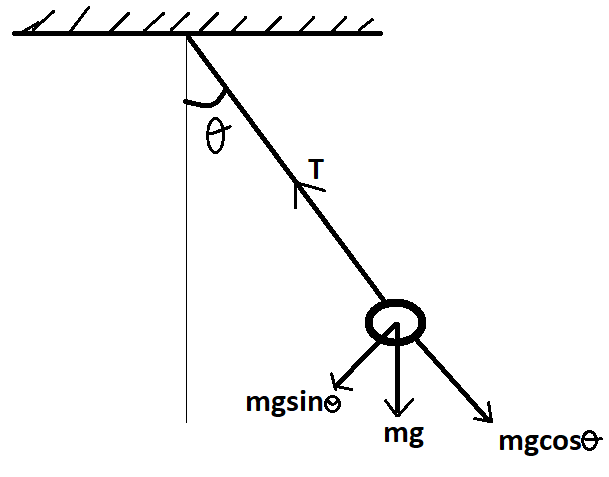Question
Question: For a simple pendulum, relation between time period \(T\), length of pendulum \(l\) and acceleration...
For a simple pendulum, relation between time period T, length of pendulum l and acceleration due to gravity gis given by:
A. T=2πgl
B. T=2πgl
C. T=2πgl
Solution
The time period of the simple pendulum is defined as the time required to complete one complete cycle of oscillation.
Restoring force fe for the simple pendulum is:
fe=−mgsinθ
Here, mmass of the suspended particle, gacceleration due to gravity and θ is angular displacement from the me
a position.
For simple harmonic oscillation acceleration a is given as,
a=−ω2x
Here, ω is frequency of oscillation and x is the distance of mass from the attachment of the string.
Complete step by step answer:
It is given that the time period of oscillation is T, the length of the pendulum l and the acceleration due to gravity g.
You have to find the relation between these quantities.
First we will calculate the time period of the simple pendulum using the formula given below,
T=ω2π ….. (1)
You have to determine this ω.

Figure: simple pendulum.
Consider a simple pendulum (figure above) a small angular displacement θ. The cosθ component of mgis balanced by the tension of the string. And the sinθ component of the mg work as restoring force so,
fe=−mgsinθ.
Here, θ is very less so sinθ≈θ
θ for this pendulum is given as θ=lx, x is distance of mass from the string is attached.
Using the above equation,
fe=−mg(lx)
The acceleration is given as a=mfe,
a=−g(lx) …… (2)
For simple harmonic oscillation acceleration a is given as,
a=−ω2x …... (3)
Compare equation 1 and 2,
−g(lx)=−ω2x
Now, solve for ω,
ω=lg …… (4)
Put value of ω from equation 4 to equation 1,
T=2πgl.
So, the correct answer is “Option B”.
Note:
Always choose a coordinate system for such a problem and all measurements should be made from that coordinate system. First find the force acting on mass then make components of that force and equate the force to get the equation of motion.
